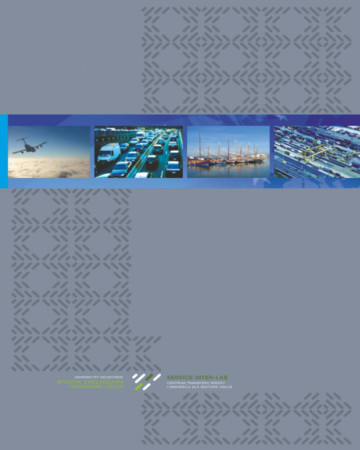
ISSN: 1644-275X
eISSN: 2353-3005
OAI
DOI: 10.18276/ptl.2019.45-08


Issue archive /
nr 1 (45) 2019
REGIONALIZACJA KOLEJOWYCH PRZEWOZÓW PASAŻERSKICH. ZAŁOŻENIA I REALIZACJA
(REGIONALIZATION OF PASSENGER RAILWAY SERVICES. GUIDELINES AND THE REALIZATION)
| Authors: |
Anna
Mężyk
Uniwersytet Technologiczno-Humanistyczny im. K. Pułaskiego w Radomiu |
| Keywords: | railways passenger services regionalization |
| Data publikacji całości: | 2019 |
| Page range: | 9 (87-95) |
| Klasyfikacja JEL: | L90 |
Abstract
The regionalization of rail passenger transport is one of the pillars of railway reform in the European
Union, which aims to significantly increase the role of rail in handling transport needs. The essence of
regionalization is the transfer of responsibility for the organization and financing of passenger rail regional
transport to the level of regional administration. The effectiveness of regionalization requires the use of
solutions that would reconcile the introduction of competitive mechanisms while ensuring an appropriate
offer of services that meets the requirements of passengers. The article presents the basic principles of
regionalization of passenger rail transport and exemplary solutions in this area, adopted in some EU countries
and in Poland. The aim of the article is to analyse whether the currently legal regulations of regionalization
in Poland enable the achievement of the rail reform objectives. The lack of important elements of
railway reforms, such as modernization of infrastructure, ensuring adequate financing of services, shaping
a coherent offer corresponding to the needs of the passengers, make it difficult to achieve the assumed
effects.
Download file
Article file
Bibliography
| 1. | EU Transport in Figures, Statistical Pocketbook 2018. Bruksela: European Commission. Pobrane z: https://ec.europa.eu/ |
| 2. | transport/facts-fundings/statistics/pocketbook-2018_en. (25.10.2018). |
| 3. | GUS (2018). Transport wyniki działalności w 2017 roku. Pobrane z: www.stat.gov.pl (27.10.2018). |
| 4. | Madrjas, J. (2017). Polska szybciej zliberalizuje rynek kolejowy. Cena za pomoc Przewozom Regionalnym. Pobrane z: https:// |
| 5. | www.rynek-kolejowy.pl/wiadomosci/polska-szybciej-zliberalizuje-rynek-kolejowy-cena-za-pomoc-przewozom-regionalnym- |
| 6. | 82757.html (25.10.2018). |
| 7. | Madrjas, J. (2018). Program Kolej Plus opublikowany. Pobrane z: https://www.rynek-kolejowy.pl/mobile/program- |
| 8. | kolej-plus-opublikowany-20-projektow-mapa-89152.html (25.10.2018). |
| 9. | Mężyk, A. (1999). Regionalizacja lokalnej komunikacji pasażerskiej w Niemczech jako element strategii rewitalizacji kolei. |
| 10. | Prace Naukowe Politechniki Radomskiej. Transport, 7, 31–48. |
| 11. | Mężyk, A. (2011). Uwarunkowania i efekty reform kolei. Radom: Wydawnictwo Politechniki Radomskiej. |
| 12. | Mężyk, A. (2014). Funkcjonowanie kolejowych przewozów regionalnych w wybranych krajach UE oraz w Polsce. Technika |
| 13. | Transportu Szynowego, 21 (11-12), 23–32. |
| 14. | NIK (2016). Funkcjonowanie regionalnego publicznego transportu drogowego. Pobrane z: https://www.rpo.gov.pl/sites/default/ |
| 15. | files/nik-p-15-035-transport-pasazerski.pdf (25.06.2018). |
| 16. | Program utrzymaniowy przyjęty przez Radę Ministrów (2018). Pobrane z: www.plk-sa.pl/biuro-prasowe (27.10.2018). |
| 17. | Rozporządzenie Rady (EWG) nr 1893/91 z dnia 20 czerwca 1991 roku. zmieniające rozporządzenie (EWG) nr 1191/69 |
| 18. | w sprawie działania Państw Członkowskich dotyczącego zobowiązań związanych z pojęciem usługi publicznej w transporcie |
| 19. | kolejowym, drogowym i w żegludze śródlądowej. Pobrane z: www.eur-lex.europa.eu (23.02.2018). |
| 20. | Ustawa o publicznym transporcie zbiorowym z dnia 16 grudnia 2010 roku. tekst jedn. Dz.U. 2018, poz. 2016. |
| 21. | UTK (2018). Koleje pasażerskie w województwach – dynamika zmian. Pobrane z: www.utk.gov.pl/pl (27.10.2018). |